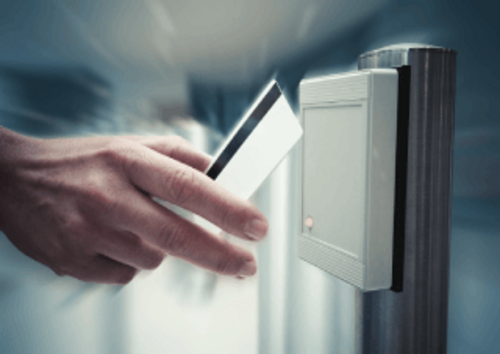Secure your world with advance security solutions

At OPTEX, we’ve embarked on a significant journey focused on unlocking the full potential of Sensing Technologies. Our mission involves tackling societal challenges head-on and finding innovative solutions while staying abreast of the latest trends. We believe that problems and trends serve as the prime catalysts for innovation, propelling us forward in our quest to make meaningful contributions to society.

Are you considering installation of Security Sensor?
Are you looking for Security Sensor?
Please feel free to contact OPTEX INDIA !
Feature of OPTEX Security sensors
Since OPTEX is widely selling to countries all over the world,
we provide our products compliance with the laws / official standards of each country and resistant to environmental conditions, etc..
We always focus on manufacturing products that customers can use with peace of mind.
Less initial failure and longer life
OPTEX conducts more than 150 in-house product evaluation tests in order to achieve “reliability” that gives absolute value to all products and “performance” that meets customer requirements when we develop new products. Among them, we consider resistance to various conditions such as rain, temperature, ultraviolet rays, the impact of dropping, and continuous ON/OFF switching of switches from the component level.
These meticulous evaluation tests and high standards improve the quality of our sensors and are the key to reduce initial failures, and achieving a long product life.
(OPTEX performs inspection to all products in the manufacturing process.)

High safety
Our goal is to pave the way for a brighter future by prioritizing safety, security, and comfort in communities worldwide through our innovative sensing technology. We remain committed to identifying the pressing needs and real challenges faced by society, offering solutions that leverage our original ideas and dependable technical expertise. By continuously innovating and delivering value, we strive to address societal needs effectively and contribute to the betterment of communities globally.
Recommended Sensors
OPTEX Intrusion Detection Sensors avoid Intrusion activities at places like Defence Cantonments, Airports, Industries, Homes, Commercial Sensors, etc.
Our Vehicle Sensors range provides accurate, above the ground, Vehicle Detection and Vehicle Counting devices for safe and efficient
Our Water Quality Sensors improve the level of water management and recycling of precious water resources. OPTEX being a leading water quality.
OPTEX is very much specialized in Automatic Door Sensors for providing safe and secure entry through Swinging, Sliding and Revolving doors.
OPTEX Access Control System prevents Unauthorized access at the gates or doors and makes security level higher to protect confidential information
To help businesses and organizations understand their visitors flow and habits, OPTEX provides a real-time, multi-directional people counter.
FAQs
Intrusion detection system
An Intrusion Detection System is an Electronic Security Solution that detects unauthorized entry into a Home, Office, Factory, Warehouse, etc. and alerts the property owner or the deployed Security Guards.
The Intrusion Detection System consists of a number of sensors and other electronic components working together to provide unparallel security 24*7. The whole system acts as a barrier to intruders and sends early warnings in case of intrusion attempt being made.
Technically an Intrusion Detection System is a low voltage electrical circuit with sensors present at different locations of the guarded premises. When some obstacle comes in the range of a device, its sensor detects an interruption in the flow of electricity and sends the electric signal to the Control Panel.
An Intrusion Detection System works systematically in the following steps :
- When an intrusion activity is detected by any security device, its sensor gets activated and sends a warning signal to the Control Panel connected to it through wires or wirelessly.
- On receiving the warning signal from a particular device, Control Panel acts based on the programmed settings for that device.
- If the device is programmed to set off the siren, the Control Panel will trigger the siren. If the device is programmed to send the signal to a phone, the Control Panel will act for it and if the integrated CCTV needs to be triggered then the Control Panel will activate the CCTV for recording the activities.
Several sensors can detect intruders, including motion sensors, Passive Infrared Sensor, LASER (LiDAR) and infrared sensors. Motion sensors detect movement in a designated area, triggering an alarm when unauthorized motion is detected. LASER is a device that emits the narrow beam of light produced by the result of Optical Amplification. The devices working on the principle of LASER emit the light in a straight line that travels into the air as a medium of transmission and hits the object in front of it regularly. If someone comes into its path, the pattern of the beam gets distorted and the device takes it as an attempt of intrusion and hence sends the alert signal to the Control Panel. Infrared sensors detect changes in infrared radiation caused by the presence of a person or object, often used in outdoor security systems. These sensors can be standalone devices or integrated into broader security systems, providing multiple layers of detection to enhance perimeter security and protect against unauthorized access.
Intrusion Detection Systems (IDS) come in two main types: Network-based IDS (NIDS) and Host-based IDS (HIDS). NIDS monitor network traffic in real-time, analyzing packets for suspicious activity or known attack signatures. HIDS, on the other hand, are installed on individual hosts or servers, monitoring system activities such as file changes, logins, and process executions. Additionally, there are also hybrid IDS systems that combine features of both NIDS and HIDS to provide comprehensive intrusion detection coverage. These systems leverage various detection techniques, including signature-based, anomaly-based, and heuristic-based methods, to identify and respond to potential security threats effectively.
Vehicle Detection System
One of the most common sensors used to detect vehicles is the inductive loop sensor. This sensor consists of loops of wire embedded in the road surface. When a vehicle passes over the loop, it disrupts the electromagnetic field generated by the loop, causing a change in the sensor's electrical properties. This change is detected by the system, indicating the presence of a vehicle. Inductive loop sensors are widely used in applications such as traffic light control, toll booths, and parking facilities due to their reliability and effectiveness in detecting vehicles.
Vehicle detection sensors typically use various technologies like inductive loops, radar, ultrasonic sensors, or cameras to detect the presence of vehicles. Inductive loops detect changes in electromagnetic fields caused by metal objects passing over them. Radar sensors emit radio waves and measure the time it takes for them to bounce back, indicating the presence of a vehicle. Ultrasonic sensors emit sound waves and detect their reflection off vehicles. Cameras capture images and analyze them using image processing algorithms to identify vehicles. These sensors then send signals to a control system, which interprets the data and triggers actions like traffic light changes or gate openings.
Vehicle sensors are diverse, serving various functions like monitoring speed, detecting obstacles, or managing engine performance. Speed sensors often use magnetic pickups or Hall effect sensors to measure wheel rotation, calculating speed based on revolutions per minute. Obstacle detection relies on ultrasonic or radar sensors, emitting signals and analyzing reflections to assess proximity to objects. Engine sensors, including oxygen sensors and mass airflow sensors, monitor combustion efficiency and airflow, adjusting fuel delivery accordingly. These sensors convert physical inputs into electrical signals, which are interpreted by the vehicle's control system to optimize performance, enhance safety, and reduce emissions.
The objectives of vehicle detection systems are to enhance traffic management, improve safety, and optimize transportation efficiency. By accurately identifying the presence and movement of vehicles, these systems facilitate real-time traffic monitoring and control, enabling efficient traffic flow and congestion management. Moreover, they enhance safety by detecting potential hazards, such as vehicles running red lights or pedestrians in crosswalks, and triggering appropriate responses like traffic signal changes or warning alerts. Additionally, vehicle detection systems contribute to transportation efficiency by enabling data-driven decision-making for infrastructure planning and resource allocation, ultimately reducing travel times, fuel consumption, and environmental impacts.
People Counting Sensor
People counting sensors, as the name indicates, are the sensors that are installed in industries, offices, public facilities, shopping centres, transport hubs etc. to count the number of people entering and exiting the place. The highly accurate sensors from Optex with 3D Technology count, store and automatically transfer the collected data to the connected software or computer for direct observation and creating reports for analysis.
VC-1020 Surface Mount
Accurate and Reliable people counting sensor, vital for Retail Facilities.
- Provides automatic traffic counts of people entering stores and facilities (IN/OUT Bi-Directional & Multiple Counts)
- Accurately tracks complicated movements (people standing still, turning back, crowds)
- Sensor processes counts, stores, and transfers data
- Simple Web-based setup interface
- Video Streaming
- Data Delivery via FTP/FTPS
- POE Powered
People counting sensors employ various technologies such as infrared sensors, thermal cameras, or stereo vision systems to detect and track individuals passing through a defined area. Infrared sensors detect heat emitted by human bodies, while thermal cameras capture heat signatures to identify people. Stereo vision systems use multiple cameras to create depth perception, enabling accurate tracking of individuals' movements. These sensors analyze data in real-time, distinguishing between humans and other objects, and count each person as they cross the sensor's field of view. The data collected is then processed to provide insights into foot traffic patterns, aiding in space utilization and resource allocation.
People counting systems offer several benefits, including enhanced retail analytics, improved operational efficiency, and better customer service. By accurately tracking foot traffic, these systems provide valuable insights into customer behavior, allowing retailers to optimize store layouts, product placements, and staffing levels to maximize sales and customer satisfaction. Operational efficiency is improved through data-driven decision-making, enabling businesses to streamline operations, allocate resources effectively, and reduce costs. Moreover, people counting systems aid in crowd management and security, ensuring a safe and pleasant experience for customers. Overall, these systems empower businesses to make informed decisions, enhance profitability, and deliver exceptional service.






